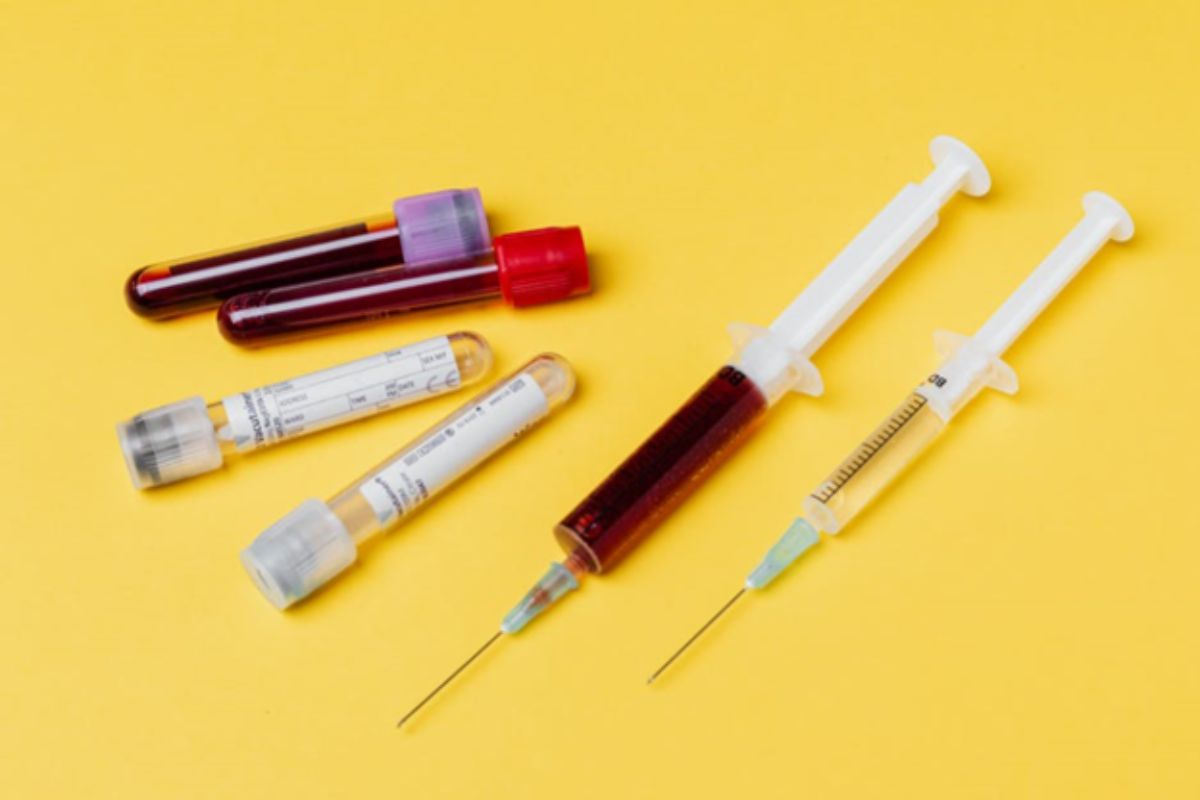Healthcare employees have a significant risk of exposure to bloodborne pathogens. In fact, OSHA estimates that 5.6 million workers face potential exposure. Nurses are the largest risk group for injuries associated with hypodermic skin injections.
About one-quarter of needlestick or sharp injuries occur in non-clinical staff. Examples include downstream workers such as laundry personnel, waste haulers, and EVS.
Workers at risk for needlestick or sharp injuries need bloodborne pathogen training. Are you wondering, “What is bloodborne pathogens training?” Keep reading to find answers.
Table of Contents
What Are Bloodborne Pathogens?
Human blood can contain infectious microorganisms or bloodborne pathogens that cause disease. There are three main infection risks for healthcare workers. They include human immunodeficiency virus (HIV), hepatitis B (HBV), and hepatitis C (HCV).
The Healthcare Industry’s Definition of a “Needlestick”?
A “needlestick” breaks the skin with a contaminated needle or another sharp instrument. “Contaminated” means it has another person’s blood, body fluid, or tissue on it.
Any sharp instrument with infected blood on it poses a risk of spreading the disease. Healthcare workers also face exposure if blood-containing body fluids splash on mucus membranes.
The following describes items that could cause exposures:
- Broken capillary tubes
- Broken glass
- Dental burs
- Dental drills
- Dental knives
- Dental wires
- Lancets
- Needle devices
- Scalpels
Injuries carry the potential to spread HBV, HCV, HIV, and COVID-19 among other diseases.
Reducing Needlestick Injuries in Healthcare
There’s been a decrease in sharp injuries with advances in safer instrument designs. For example, disposable safety syringes and “butterfly” steel needles. Yet, there’s still a high rate of injuries among physicians when suturing or using scalpels.
Thus, it’s key to correctly use safety devices and disposal containers. These procedures help protect the healthcare providers.
What If You Have Needlestick Injury?
It’s key to remember that even with the high number of injuries, infection rates are low. People worry if their skin gets punctured or has fluid splashed on mucous membranes. In fact, research doesn’t show a high rate of infection related to these exposures.
Certain factors impact the worker’s risk. These include the type of needle, injury severity, and prior vaccination status. Another consideration is the type of organism contained in the blood.
Access to post-exposure prophylaxis (PEP) also impacts the risk of contracting a disease. The following gives an overview of these high-risk diseases.
Human Immunodeficiency Virus (HIV)
The HIV virus attacks the person’s immune system making it harder to fight infections. If left untreated, acquired immunodeficiency syndrome (AIDS) can develop.
AIDS greatly reduces the body’s cellular immunity. This prevents them from combating infections and cancers. It often leads to death.
At the start of the U.S. HIV outbreak, many healthcare workers feared getting this disease. Much of this dread was based on a lack of understanding about transmission.
After further study, scientists found that occupational HIV transmission was very rare. There have only been 58 confirmed cases of healthcare workers getting HIV from their job. In fact, the risk of a needlestick causing HIV is below one percent.
Susceptible people who have a puncture injury have a six to 30 percent chance of getting HBV. The risk for contracting HCV from a puncture injury is 7.4 percent.
Hepatitis
Hepatitis, inflammation in the liver, results from a bacterial or viral infection. In some cases, it causes cirrhosis, fibrosis, liver failure, or liver cancer. This damages the liver so that it can’t filter toxins from the blood.
There are different types of hepatitis including type A, B, C, and E. The most common are B and C.
HBV
After decades of HBV vaccine availability, it’s still the leading liver infection. About 257 to 291 million people around the world suffer from chronic HBV. Many people show no signs of cirrhosis and can make screening for liver cancer harder.
HBV is more common than HCV and has higher morbidity and mortality rates. Thus, it gets more attention and research focus. Most of the world’s liver cancer cases related to hepatitis have both types B and C.
HBV is one of a few viruses with a covalently closed circular DNA structure (cccDNA). This cccDNA makes itself a permanent part of the healthy cell’s DNA. It can live in the cells without showing evidence in hepatitis B surface antigen testing.
This means that the person may have chronic HBV that’s undetectable. It can also reactivate at any time. There’s still no cure for HBV.
HCV
Hepatitis C can lead to cirrhosis (scarring of the liver) and liver cancer. It’s also much more stable and less infectious than HBV.
The HCV invades healthy cells and begins replicating. It then proceeds to infect other healthy cells.
In 2013 the FDA approved an antiviral pill to treat HCV. Following an eight-to-twelve-week course of this pill, the person can achieve a cure. This is defined as a sustained virologic response or a lack of detectable virus in the blood.
The Needlestick Safety and Prevention Act (NSPA)
The NSPA mandates that all employers protect at-risk employees. This Act focuses on exposure to bloodborne pathogens. It also includes other potentially infectious materials (OPIMs).
NSPA addresses needlesticks and other percutaneous puncture injuries. The Act’s goal is to reduce bloodborne pathogen risk exposure among healthcare workers.
This Act adheres to OSHA’s regulations addresses the following:
- It defines “sharps with engineered sharps injury protection”
- It defines “needless systems”
- Requires employers to put new technologies in place
- Requires employers update exposure control plans
- Requires employers to include employee opinions regarding engineering controls
- Requires employers to keep a sharps injury log
This law covers workers in hospitals, clinics, outpatient surgery centers, and nursing homes. It also applies to anyone with an emergency response kit.
What is Bloodborne Pathogens Training?
The OSHA bloodborne pathogens training falls under regulation 1920.1030(g)(2)(i). This addresses educations requirements for all at-risk employees. This training must occur during normal work hours at no cost to the worker.
It’s the employer’s duty to ensure that employees take part in the education program. The bloodborne pathogens training must include the following information.
- Bloodborne pathogen exposure entry routes
- Procedures to follow to limit and reduce exposure risk
- Explain the procedures to follow for “Universal Precautions”
- Define activities that increase bloodborne pathogen exposure risk
- Define and describe personal protective equipment (PPE)
- Explain work situations that need specific PPE use
- Explain protocols for disinfecting and cleaning supplies and equipment
- Explain procedures for the proper disposal of used equipment
- Describe proper hygiene protocols to reduce infection risk
- Explain the protocol to follow in the event of a bloodborne pathogen exposure
Employers must provide all tools needed by workers to meet these standards. OSHA mandates employee training when they start a new job. All applicable workers must also complete annual training programs.
OSHA allows companies to tailor annual training to meet individual employee’s needs. This means adjusting what they’re taught based on their background and responsibilities.
What is Bloodborne Pathogens Certification?
Does your work setting include needles and sharp objects that get exposed to blood? If so, employees working with these items must receive bloodborne pathogen training. Some facilities require workers to complete the certification before starting at-risk jobs.
It’s also essential that you keep up with legislative and regulatory changes. This must be part of all training settings. If you’re the person in charge of this process, you may feel overwhelmed.
Remember, OSHA doesn’t mandate bloodborne pathogen training to complicate your work life. Its purpose is to improve the safety and productivity of the facility. When employees have to take time off for an on-the-job injury it strains your workflow.
Bloodborne pathogen training and certification are now available online. This helps companies ensure that their staff is receiving current, comprehensive information. It also provides flexibility for workers to complete this training.
Certification shows that the individual has the knowledge needed to work safely. This ensures that you maintain a safe environment for staff and patients. You can also have the peace of mind that you’re meeting all regulatory standards.
Which Employees Need Bloodborne Pathogen Training?
Do you feel confident about which workers need to complete bloodborne pathogen training? List all jobs that have contact with instruments or equipment exposed to blood. Each employee included on this job list must receive safety training.
They need to know how to protect themselves from infections. This includes safety protocols and procedures to reduce the risk of accidents. Individuals must also understand and follow safe work practices.
The facility needs to establish a method for detecting and correcting unsafe activities. This may involve the addition of upgrades to improve the environment’s safety.
Examples of healthcare employees who should complete this training include the following.
- Dental hygienists and assistants
- Dentists
- Doctors
- Nurses
- Staff in nursing homes, rehabs, and long-term care facilities
- Home health care providers
- Phlebotomists and lab staff members
- Housekeeping staff
- Blood and tissue bank staff
- Environmental services staff
- Medical equipment repair staff
First responders also need training. This includes police, firefighters, and paramedics. Tattoo and piercing artists should be trained since they work with blood-exposed needles.






